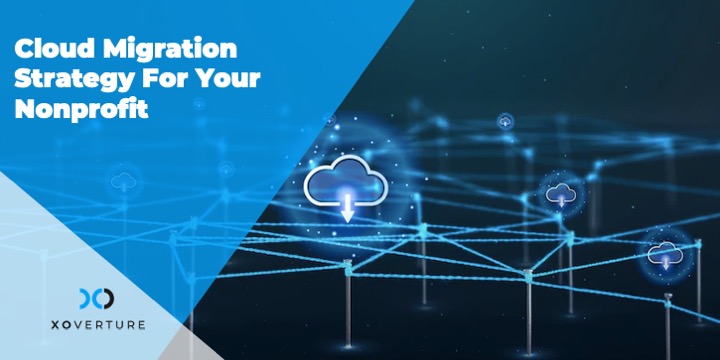In the past, many nonprofits had decided against cloud migration because of legalities, donor and financial confidentiality, and concerns about their data safety. However, thanks to the Azure Cloud migration strategy for nonprofits, they can now scale their operations and move to the cloud with confidence. It is ideal for securing your data and saving money.
The unique features and special prices that Azure offers can be quite beneficial to your business. To become successful in achieving your missions and assisting society as a whole, you need to integrate encryption, donation management, and volunteer engagement with scalable cloud infrastructure.
Microsoft’s Azure public cloud computing platform provides Nonprofits with options for services like analytics, storage, virtual computing, or remote storage. You can opt for Cloud migration for nonprofits to get the following benefits:
- Flexibility
- Reliability
- Global Operations
- Cost Effectiveness
The migration procedure does not have to be challenging, time-consuming, or expensive. Making the move may be easy if your nonprofit has done its due diligence.
What Is A Cloud Migration Strategy?
An organization’s plan to transfer all of its infrastructure’s resources, such as data, services, and applications, to a cloud server is known as a cloud migration strategy.
Moving all digital assets to the cloud from on-premise deployments or another cloud is known as cloud migration. Since the 2020 COVID-19 outbreak, businesses have reported using the cloud considerably more often than usual, and the majority of enterprises now include at least one cloud component in their infrastructure.
Types of Cloud Migration Strategies
Lift-and-Shift / Rehost migration
This approach suggests that applications will migrate to the new architecture without being significantly modified.
Re-architect and Refactor
In this situation, you redesign the application code utilizing already-existing elements in a way that makes better use of the cloud: horizontal, adaptable databases, auto-scaling, unlimited blob storage, etc.
Native Cloud Migration
If you choose this strategy for a specific workload, you must entirely rewrite the application code to fully incorporate the cloud paradigm.
Reconsider
Due to legal constraints, some legacy programming applications must be retained (they have to be hosted in-house). Under certain situations, it could be more cost effective to remove them and invest in third-party SaaS solutions.
Step-By-Step Cloud Migration For Nonprofits
- Outline reasons for moving to the cloud – for nonprofits there are many, like cost-effectiveness, remote access, better management of increased donor and volunteer expectations, and much more.
- Form a cloud management team
- Assess your IT management
- Plan your cloud implementation
- Get your application cloud ready
- Migrate your data
- Test and switch to production
Cloud Computing Considerations For Nonprofits
Office apps and cloud storage for daily tasks and other things are included in the Azure migration strategy for nonprofits. Here are a few Microsoft products made specifically for nonprofits:
- Azure Cloud
- Dynamics 365 and Power Platform
- Microsoft 365
- Power BI
Microsoft is committed to reducing the financial strain on nonprofit organizations, so Microsoft 365 Business basic is available for free.
Once you have chosen a cloud migration type, you may start the actual process by carefully following the steps listed below:
How To Ensure Seamless Cloud Migration
Choose The Right Partner
When considering a cloud, there are numerous platforms and service levels to decide from. Make sure your nonprofit is working with a provider who can assist you make an informed decision about the best plan and package for your requirements. Make sure they have a solid implementation plan and can define your nonprofit’s needs accurately.
Devise A Plan
When designing your migration strategy, keep in mind the technical challenges and commercial objectives. A detailed plan built around each step of the cloud migration can be quite helpful. You must start small with the least important tasks and gradually move up.
Track And Monitor
It’s time to put your initial KPIs to work by measuring and tracking the process. These metrics make it possible to spot glitches during the migration and fix them.
For cloud migration for nonprofits to be successful, any issues that may occur must be addressed promptly.
Testing Is Important
It is recommended to evaluate user experience and application performance in the cloud during the short pilot or MVP version in the early stages of migration. By doing so, you can verify that users—internal as well as external—have a great user experience, and IT staff members will feel more confident that the migration’s objectives can be met.
Cloud-native applications should be tested across a range of devices and browsers, which is one of the crucial features of cloud performance. Look for testing solutions that can replicate the user experience in different situations and can do so on a large scale. Utilize a phased strategy and establish precise benchmarks for all workloads. After each workload migration, test the performance.
Benefits of cloud migration for nonprofits include:
- Improved agility
- Faster innovation
- Easing of increasing resource demands
- Better management of customer expectations
- Cost efficiency
- Deliver immediate business results
- Simplified IT
- Improved performance
How Can XO Help
In order to assist our clients in transforming their current applications and realizing “future-ready” business outcomes, XO’s cloud migration services offer an evolutionary set of services, from strategy to execution. The understanding that successful modernization uptake necessitates a flexible blend of appropriately scaled alternatives with a range of risk and return profiles serves as the foundation for our all-encompassing strategy.
Contact our cloud specialists today!




